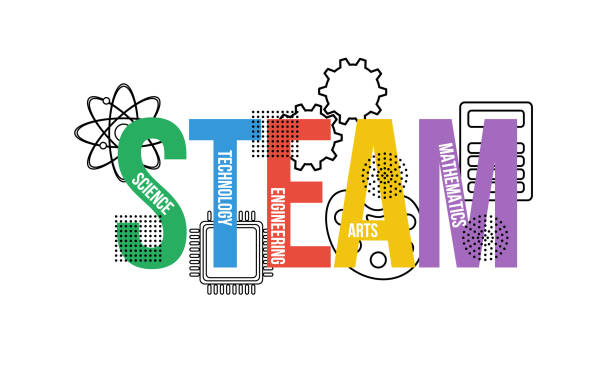
Turning STEM into STEAM
Posted March 31, 2024, 2:23 pm by
We have all heard the popular rallying cry. Advances in science, technology, engineering, and math—STEM fields—will drive innovation and put America back on the road to economic prosperity. But a growing group of people and institutions recognize the equally crucial role of art and design in invention and advocate incorporating art into STEM, transforming it into “STEAM.”
Combining Left and Right Brain Thinking
The recognition of the collaborative power of art and science is not new. Think about iconic Italian Renaissance polymath Leonardo Da Vinci known for his masterpiece paintings as well as his flying machine concepts. Or the early photographer Charles Nègre (1820–1880) who eloquently summed up the notion of STEAM, writing, “Where science ends, art begins.”
Artists and scientists have more similarities than differences despite their seemingly opposite pursuits. A deep curiosity about the world around them motivates them to observe, take in details, question assumptions, and seek new perspectives. While the play of light on a leaf might captivate an artist, the intricate dance of an atom's electrons might mesmerize a scientist. Their insatiable curiosity fuels their desire to learn more.
Artists use creativity to express themselves and evoke emotions. Scientists use it to generate hypotheses, design experiments, and solve complex problems. Both approaches require thinking outside the box, challenging existing paradigms, and playing with new strategies.
The creative process is rarely linear — for artists or scientists — involving iteration, trial and error, and refinement. How many sketches does it take before an artist finalizes a piece? How many experiments does it take a scientist to reach a conclusive result?
The prestigious college Rhode Island School of Design (RISD) is championing the STEAM movement today. They're not alone. From Xavier University to Lincoln University, and University of St. Thomas to Michigan State University, more schools are embracing the concept.
As RISD's website says:
In this climate of economic uncertainty, America is once again turning to innovation as the way to ensure a prosperous future. Yet innovation remains tightly coupled with Science, Technology, Engineering, and Math – the STEM subjects. Art + Design are poised to transform our economy in the 21st century just as science and technology did in the last century.
RISD outlines three major objectives for the contemporary STEAM movement:
- Transform research policy to place Art & Deign at the center of STEM.
- Encourage integration of Art & Design in K – 20 education.
- Influence employers to hire artists and designers to drive innovation.
Stay tuned for Part II of "Turning STEM into STEAM."
Blog Categories
- Career Advice
- College Admissions
- Colleges & Universities
- Financial Aid and Scholarships
- For Counselors
- For Parents
- For Students
- Gap Years
- Mental Health and Wellness
- Online Learning
- Performing and Visual Arts
- STEM Majors and More
- Summer Programs
- Teen Volunteering
- Trade & Vocational Schools
- Tutoring & Test Prep

Organization with listings on TeenLife? Login here
Register for Free
We’re here to help you find your best-fit teen-centered academic and enrichment opportunities.
Forgot Password
"*" indicates required fields








